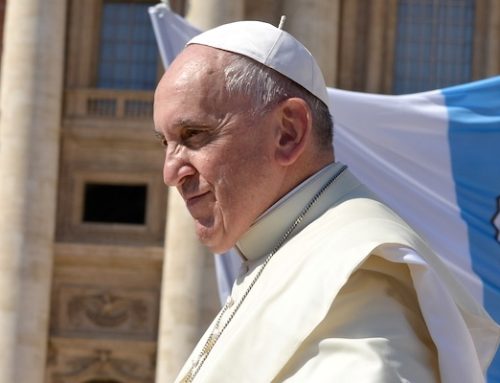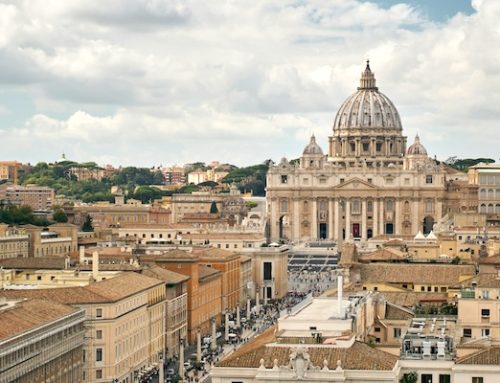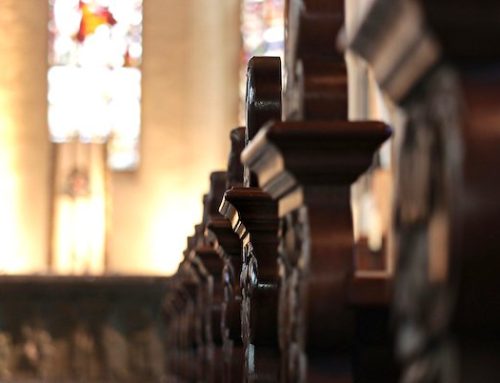My friend Tony Rossi looks at a subject that should be of interest to a lot of people involved in parish life, especially deacons. (I know I’ll be stealing this for a homily someday.)
From Light One Candle, the blog of The Christophers:
Food banks are a blessing to hungry people around this country and around the world. But did you ever wonder how they got started? Well, a Christopher Award-winning children’s book has the answer. Written by Jeff Gottesfeld and illustrated by Michelle Laurentia Agatha, “Food For Hope” tells the story of John van Hengel, the Catholic man who created food banks inspired by his faith and the hardships of his life. Gottesfeld joined me recently on “Christopher Closeup” to share van Hengel’s story, as well as his own background as an observant Jewish man who greatly respects Catholicism.
During the first few decades of van Hengel’s life, there were no indications he would ever go hungry. He grew up in Wisconsin during the Great Depression, but his family never lacked food. He attended college and grad school, became president of his fraternity, moved to California, married a model, had two children, and thrived as a salesman for a sportswear company.
Then, it all fell apart. Van Hengel lost his job, got divorced, and lost custody of his children. He returned home to Wisconsin and found work in a rock quarry. But while breaking up a fight, he endured a spinal injury, which required surgery. Still, he was in pain and needed rehabilitation, so on his doctor’s advice, he moved to Arizona, where the warmer weather might help his recovery.
That’s how van Hengel, now destitute, wound up in Phoenix in 1967 at a St. Vincent de Paul-run soup kitchen at St. Mary’s Catholic Church. In “Food for Hope,” Gottesfeld writes, “John liked people. He talked with everyone in the dining room — disabled veterans, the homeless, and kids whose parents had to choose between rent and food. Their stories opened his heart. He found work at the kitchen, shelter in a cheap room above a garage, and faith in prayer with Father Ronald at St. Mary’s Church.”
The menu at the soup kitchen was minimal (soup, rice, beans, powdered milk), so van Hengel took the initiative to ask a local citrus orchard if he could collect the grapefruits that had fallen off their trees and would otherwise be thrown away. They agreed, and fresh fruit made its way onto the menu.
Then came the incident that changed everything. Gottesfeld said, “On one of his runs, a woman grabbed van Hengel…and told him, ‘I’ve got 10 kids, and they eat like kings. I’m not paying anything for it.’ And van Hengel’s like, ‘Right, sure.’ The woman grabbed him by the arm, took him to a supermarket dumpster, and pointed inside. The dumpster was full of discarded food that was completely edible. The woman said, ‘I just wish I could put the stuff in a bank.’”
Van Hengel got excited at this idea, so he went back to St. Mary’s and told Father Ronald, a Franciscan priest, that they should start a bank to store food. Father Ronald agreed and told van Hengel, “Do it.”
Van Hengel protested that he already worked at the soup kitchen and didn’t have time. But Father Ronald responded, “You heard the call, John. Decide if you want to listen.”
He listened.
Gottesfeld said, “St. Mary’s Church gave him an abandoned bakery on Skid Row in Phoenix, and he started there…I had the opportunity to speak at St. Mary’s back in the spring, soon after the book came out. I met a number of people who knew van Hengel, and, of course, they’re proud as can be. And this little food bank that he started in the abandoned bakery, I think they did 125,000 pounds of food their first year…This past year, the St. Mary’s Food Bank in Phoenix did 125 million. So think about that…They have a couple of hundred full-time employees, and they’re putting produce through, and they’re helping people get job training.”
There’s much more at Light One Candle, including a link to the podcast with the full interview.







